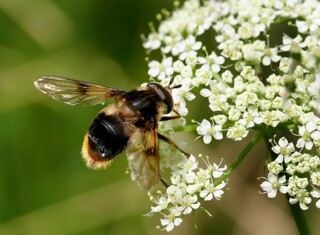Not Enough Insects?
Hugh Pennington
A recent review by scientists in Australia of 73 historical studies of insect decline concluded that insect biodiversity is threatened worldwide, and 40 per cent of insect species are threatened with extinction over the next few decades. But there is a puzzle. The classes that are declining fastest are butterflies, bees and dung beetles. No one is going out of their way to eliminate them. Other insects that we attack deliberately and for which extinction would be a cause for celebration are doing well.
Aedes aegypti is a blood-sucking mosquito that transmits yellow fever, dengue, chikungunya, and zika viruses. Science-based efforts to attack the habitats of its larvae were started in Cuba in 1901 by William Gorgas, a US Army medical officer. The Pan-American Sanitary Bureau started vigorous national mosquito control programmes in 1947. Eradication of Aedes aegypti from the whole of Brazil was declared in 1958. DDT was central to the success. But in the late 1970s the mosquito came back. Dengue outbreaks signalled its return. Its source was in Venezuela. It has spread south in Brazil ever since. Zika transmission started in 2015. It continues.
Aedes aegypti larvae live in small collections of water; in tree rot holes and in discarded rubbish. The Phlebotomus and Lutzomyia sandflies, which transmit leishmaniasis, live in dry environments. Like Aedes, the sandflies are doing well. There are up to two million cases of leishmaniasis every year in Africa, Asia and South America; the number is almost certainly increasing.
Bluetongue is a virus disease of ruminants that is particularly severe in high-value breeds of sheep and some kinds of deer. It is transmitted by midges. In 2006 for the first time it caused outbreaks in northern Europe. Global warming was thought to be encouraging the most important midge vector species, Culicoides imicola, to spread north. But captures of more than 34,000 midges during an outbreak in the Netherlands found 16 different species, including the Highland midge, Culicoides impunctatus, but no imicola. Some of these species breed in dung, others in forest leaf litter, some in compost heaps, and others in rotting mushrooms. Some could spread the virus. Others could not. So it would be wrong to make any generalisations about ‘the midge’, given how many species there are. Highland midge larvae prefer to live in bogs containing sphagnum moss, rushes and moor grass: 2018 was a bumper year for them in Scotland, with three incidence peaks instead of the usual two.
I started collecting flies a long time ago. Personal experience does not support the notion that they are doomed, even if some have experienced dietary shortages. Sewage drains are no longer open. And the popularity of cremation has made Conicera tibialis, the coffin fly (which prefers well matured corpses buried deep), to seek other meals.
Modernity is not always bad for biodiversity. Plantations of pine trees used to be denigrated. But the aphids that live on them are food for the larvae of Eriozona syrphoides, a handsome, bumble-bee mimicking hover fly: I was the first to find it in Britain, more than fifty years ago, in the north of England. It now occurs in Wales and Scotland too. It is hard to spot, because it flies fast and doesn’t linger on the flowers that it pollinates when it is disturbed. Not so the kelp fly, Coelopa. Earlier this year I needed a shovel to get rid of the mass of them that had invaded my Banffshire house. They had come from the big mounds of Laminaria seaweed built up against the north-facing sea wall thirty feet away, built after the devastating 1953 North Sea storm surge. Another example of human activity helping the entomofauna.

Comments